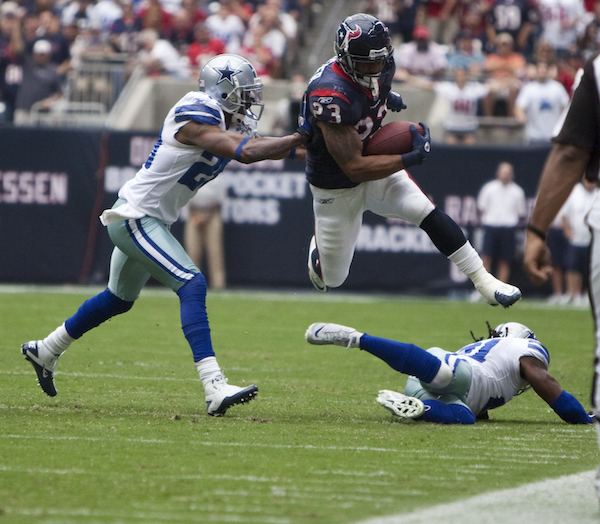Dear Sports Fan,
My friends told me that the clock stops in an NFL game when a player with the ball goes out of bounds. Now, I’m fairly new to watching football, but I’m pretty sure they’re wrong. I was watching a game this weekend and clearly saw the clock running before the next play after the ball carrier went out of bounds. Am I crazy or are they wrong? What actually happens to the clock in the NFL when a ball carrier goes out of bounds?
Thanks,
Vincent
Dear Vincent,
You’re not crazy, you’re observant. This is one of the most common misconceptions about football. 95% of football fans will say the clock stops when the ball goes out of bounds, just like your friends did. It’s not true. They are either avoiding a complex answer or they’ve never even noticed that it’s not true! Avoiding complexity is a good policy when it comes to explaining something to a beginner, but never if it results in saying something that’s not true. In this post, I’ll clear up this misconception about the NFL game clock and going out of bounds. In case you want to check the NFL rules themselves, the ones that apply to this question are here.
There are three main possibilities for how the game clock is dealt with after a play ends.
- It continues to run
- It stops until the ref places the ball on the ground in the spot where the next play should begin
- It stops until the next play begins
We can apply some basic rules to when each of these options applies in an NFL game.
- As a default, the game clock continues to run.
- When it may take a little while for the players and refs to untangle themselves from the result of the previous play and get back in place to start a new one, the game clock pauses until the ref gets the ball in place.
- When it’s likely that each second of game time is at a premium, the NFL, because it wants games to be as exciting as possible (this is an entertainment industry, after all), has created ways for smart teams to get the clock to stop after some types of plays.
Once you understand those as the three options, you can start making sense out of what seemed like an almost infinite set of possibilities, each with their own specific treatment. Here is how these principles apply to a ball-carrier going out of bounds.
If a ball carrier goes out of bounds with the ball, the game clock temporarily stops. For most of the game, the game clock restarts when the ref places the ball on the ground where the next play will begin. (Option 2) Exceptions to this are: during the last two minutes of the first half and the last five minutes of the second half. During these times, the game clock is not restarted until the next play begins. (Option 3) In case you were wondering, a regular season overtime period is treated like the second half of a game, while playoff overtime periods are treated as though a new game is beginning and the first overtime period is the first quarter.
The rules that apply to the NFL game clock and going out of bounds are often simplified to, “the clock stops when the ball carrier goes out of bounds.” This misleading simplification works most of the time because it is true for most of time that fans pay attention to the clock. If it’s not in the last two minutes of the first half or the last five minutes of the second, barely anyone is paying attention to the clock at all. This is how a rule that is in place for 53 of a game’s 60 minutes can be completely missed by even the most knowledgeable football fans.
Thanks for reading,
Ezra Fischer

